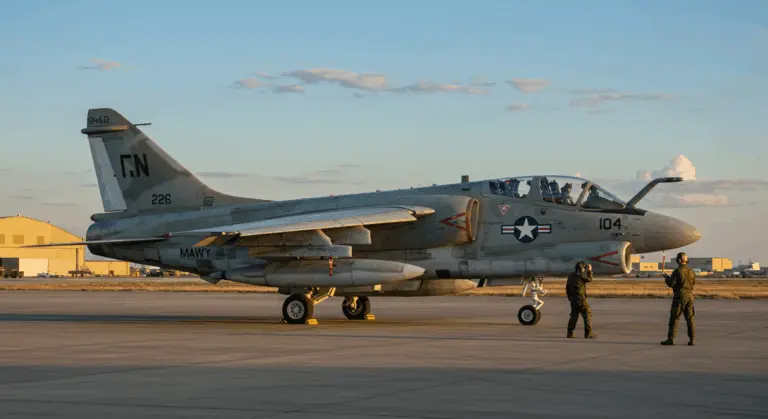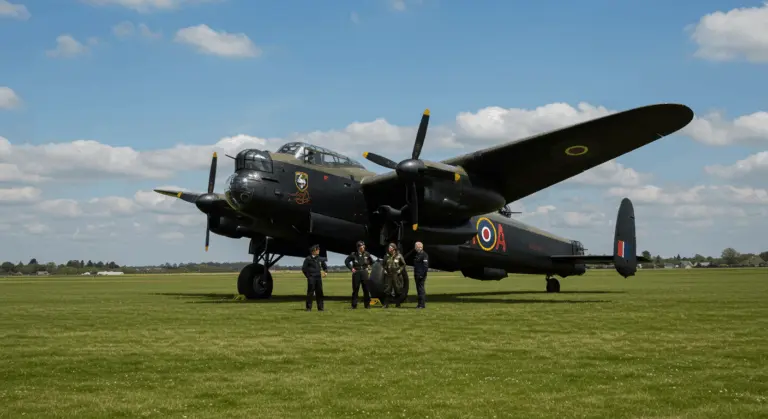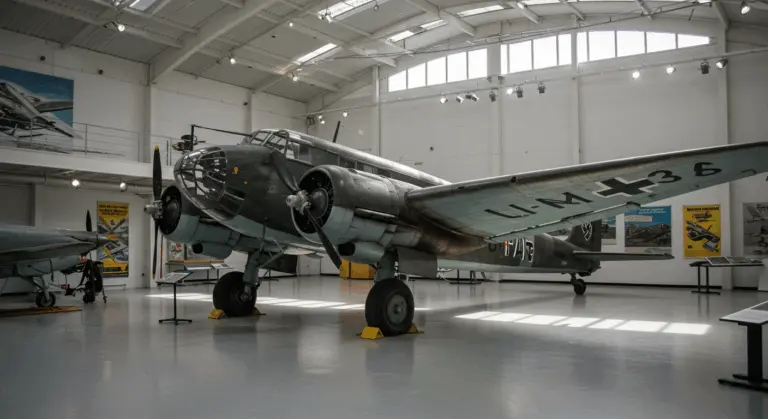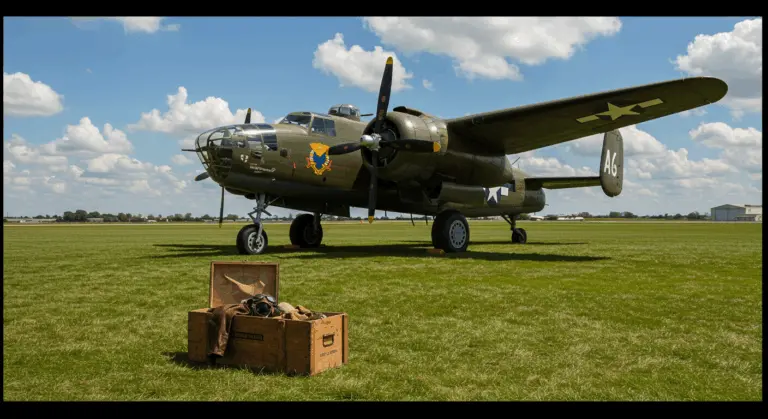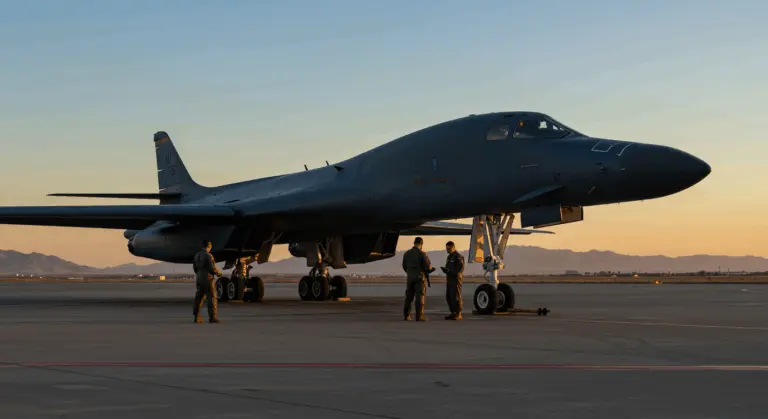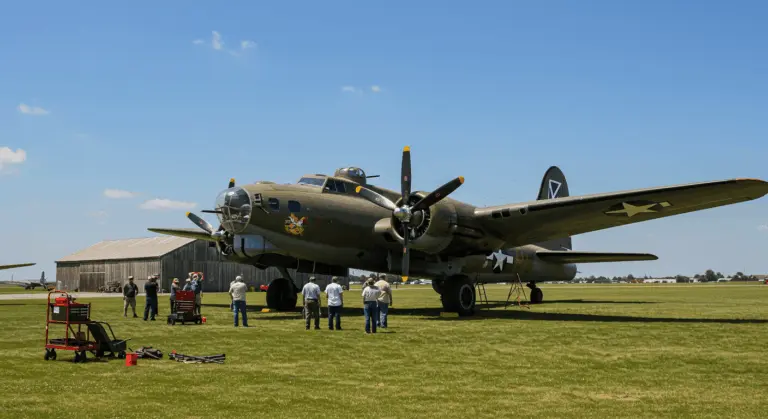Overview of the AV-8B Harrier II
The McDonnell Douglas AV-8B Harrier II stands as a remarkable single-engine, second-generation ground-attack aircraft within the distinguished Harrier Jump Jet lineage. What distinguishes this aircraft is Its extraordinary vertical or short takeoff and landing (V/STOL) capabilities, transforming it into an exceptionally versatile platform for light attack and multirole missions.
The aircraft is powered by the sophisticated Rolls-Royce Pegasus turbofan engine, featuring ingeniously vectorable nozzles that enable its remarkable vertical flight capabilities. Extensive use of composite materials significantly reduces weight while simultaneously boosting both payload capacity and operational range.
Development and History of the AV-8B Harrier II
The AV-8B Harrier II emerged from an ambitious development program designed to overcome the inherent limitations of earlier Harrier models. Introduced in the late 1970s and entering service in the early 1980s, this aircraft marked a significant advancement in V/STOL technology.
Key improvements in the AV-8B design included:
-
A larger wing for improved lift and payload capacity.
-
A raised cockpit for better pilot visibility.
-
Advanced aerodynamic devices for enhanced control during all flight regimes.
Operation Desert Storm marked a defining chapter in the aircraft’s development history, where it showcased exceptional versatility and combat effectiveness under real-world conditions. This combat experience established its reputation as an indispensable asset for expeditionary warfare. Throughout its service life, the aircraft has undergone continuous refinement, with variants like the Night Attack and Harrier II Plus introducing enhanced capabilities that have kept the platform relevant in evolving combat environments.
Origins of the AV-8B Harrier II
The AV-8B Harrier II’s genesis traces back to an innovative international collaboration between the United Kingdom and the United States. Building upon the solid foundation of the original British Harrier, this transatlantic partnership aimed to develop an advanced V/STOL aircraft that could transcend first-generation limitations while preserving their unique operational advantages.
The evolution from Harrier I to Harrier II was a comprehensive redesign that advanced in V/STOL aircraft development. The AV-8B became a cornerstone of US Marine Corps expeditionary operations, and its successful implementation demonstrated the viability of advanced V/STOL aircraft to allied air forces.
Key Upgrades and Variants
Throughout its distinguished service life, the AV-8B Harrier II underwent substantial upgrades that created specialized variants offering improved combat capabilities. Two variants stand out as particularly noteworthy: the Night Attack and Harrier II Plus models.
The Night Attack variant (AV-8B(NA)) dramatically expanded the aircraft’s operational envelope with several key upgrades:
-
A forward-looking infrared (FLIR) system.
-
Compatibility with night vision goggles.
-
Enhanced cockpit displays optimized for low-light operations.
The Harrier II Plus variant took these capabilities even further, incorporating a sophisticated APG-65 radar system borrowed from the proven F/A-18 Hornet. The radar system significantly improved its air-to-air capabilities and enhanced situational awareness across all combat scenarios. The radar integration allowed for beyond-visual-range target detection and engagement, making the Harrier II Plus a more complete multirole platform. These progressive upgrades have been instrumental in maintaining the AV-8B’s relevance in modern military operations, extending its effective service life well beyond initial projections.
Specifications of the AV-8B Harrier II
The AV-8B Harrier II boasts impressive physical dimensions and performance specifications that directly enable its unique operational capabilities. Measuring 46 feet 4 inches in length, standing 11 feet 8 inches tall, and spanning 30 feet 4 inches across, this remarkably compact aircraft can operate from confined spaces where conventional fixed-wing aircraft simply cannot function.
Powering this remarkable machine is the formidable Rolls-Royce Pegasus turbofan engine, delivering approximately 20,280 pounds of thrust in the Day Attack version and an impressive 22,200 pounds for the Night Attack variant. The engine’s distinctive feature is Its four vectorable nozzles can rotate seamlessly—directing thrust downward for vertical flight or rearward for conventional flight, creating the aircraft’s signature V/STOL capability.
Operational History and Combat Use
The AV-8B Harrier II has forged an impressive operational legacy, with Operation Desert Storm in 1991 serving as its defining combat debut. As the first Marine Corps tactical strike aircraft to reach the theater, the Harrier II demonstrated exceptional readiness and effectiveness throughout the entire conflict.
Desert Storm revealed one of the Harrier II’s greatest strengths: its unparalleled operational flexibility. The aircraft operated successfully from both land bases and sea platforms, highlighting its expeditionary nature and ability to project power from diverse locations. This versatility proved invaluable for military planners, allowing for rapid deployment and redeployment as tactical situations evolved.
The Harrier II’s battlefield proximity capabilities made it an exceptionally valuable close air support asset. Its vertical landing capability enabled forward basing dangerously close to front lines, reducing response times and delivering timely, precision fire support exactly when ground troops needed it most.
AV-8B Harrier II Operators
While the United States Marine Corps remains the primary operator, the AV-8B has also served with notable distinction in Spain and Italy’s naval forces. Both nations have leveraged it’s V/STOL capabilities to significantly enhance their maritime power projection abilities.
Spain maintains an active AV-8B fleet with operational plans extending to approximately 2030. The Spanish Navy operates these aircraft from the Juan Carlos I amphibious assault ship, where they provide critical air support capabilities for Spanish naval operations. Meanwhile, Italy approaches the twilight of its Harrier II operations, with retirement imminent as the nation transitions to next-generation aircraft.
Design Features of the AV-8B Harrier II
The AV-8B Harrier II was designed to replace both the AV-8A and A-4M light attack aircraft, emphasizing four critical attributes essential for Marine Corps expeditionary operations:
The Harrier II’s design centers on: vertical/short takeoff and landing (V/STOL), made possible by the ingenious Rolls-Royce Pegasus engine and its four vectoring nozzles. This propulsion system enables operations from austere forward locations, amphibious assault ships, and battle-damaged runways—environments that would ground conventional fixed-wing aircraft entirely. This flexibility greatly enhances the aircraft’s strategic and tactical utility in expeditionary operations.
Critical design elements include a supercritical wing that maximizes aerodynamic efficiency, plus extensive composite materials that reduce weight while increasing both payload and range. The cockpit is configured for excellent pilot visibility, essential for both attack missions and the transition between vertical and conventional flight.
Future of the AV-8B Harrier II
The AV-8B Harrier II’s future involves a carefully planned transition as cutting-edge aircraft enter service. In 2014, the US Marine Corps made a pivotal announcement: the Harrier II fleet would be retired, with the advanced F-35B Lightning II designated as its successor.
This retirement follows a carefully phased approach designed to maintain seamless operational continuity. VMA-223, the last Marine squadron to fly the Harrier, will transition to the F-35B by September 2026. Early 2024 marked a poignant milestone: the final two AV-8B pilots completed their training, symbolizing the approaching end of an era. According to USMC aviation strategy, half of the 39 remaining Harriers will be retired in 2026, with the remainder phased out by the second half of 2027.
During this transition, the Harrier continues fulfilling its operational commitments—from Marine Expeditionary Unit deployments to routine flight operations. Internationally, Spain plans to maintain its Harrier fleet until at least 2030, extending the aircraft’s global service life beyond its American retirement. The F-35B Lightning II builds upon the Harrier’s V/STOL capabilities with stealth technology and cutting-edge avionics—marking the next generation in V/STOL combat aircraft while honoring the Harrier II’s enduring legacy.

